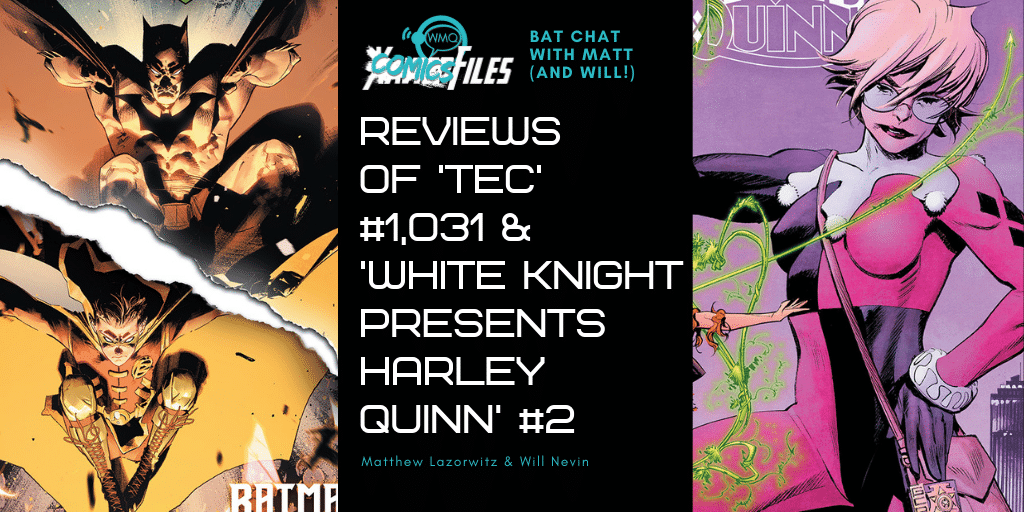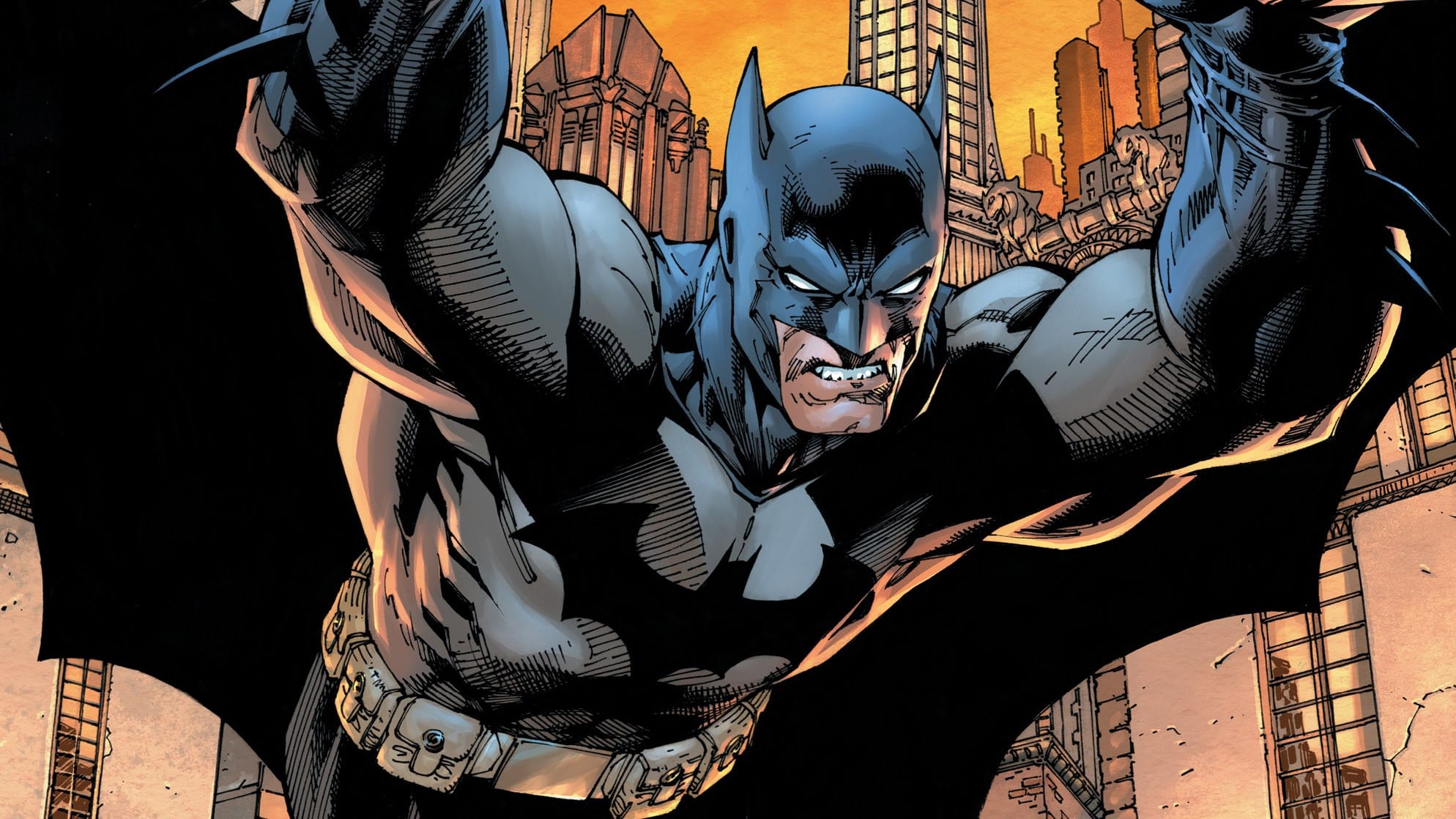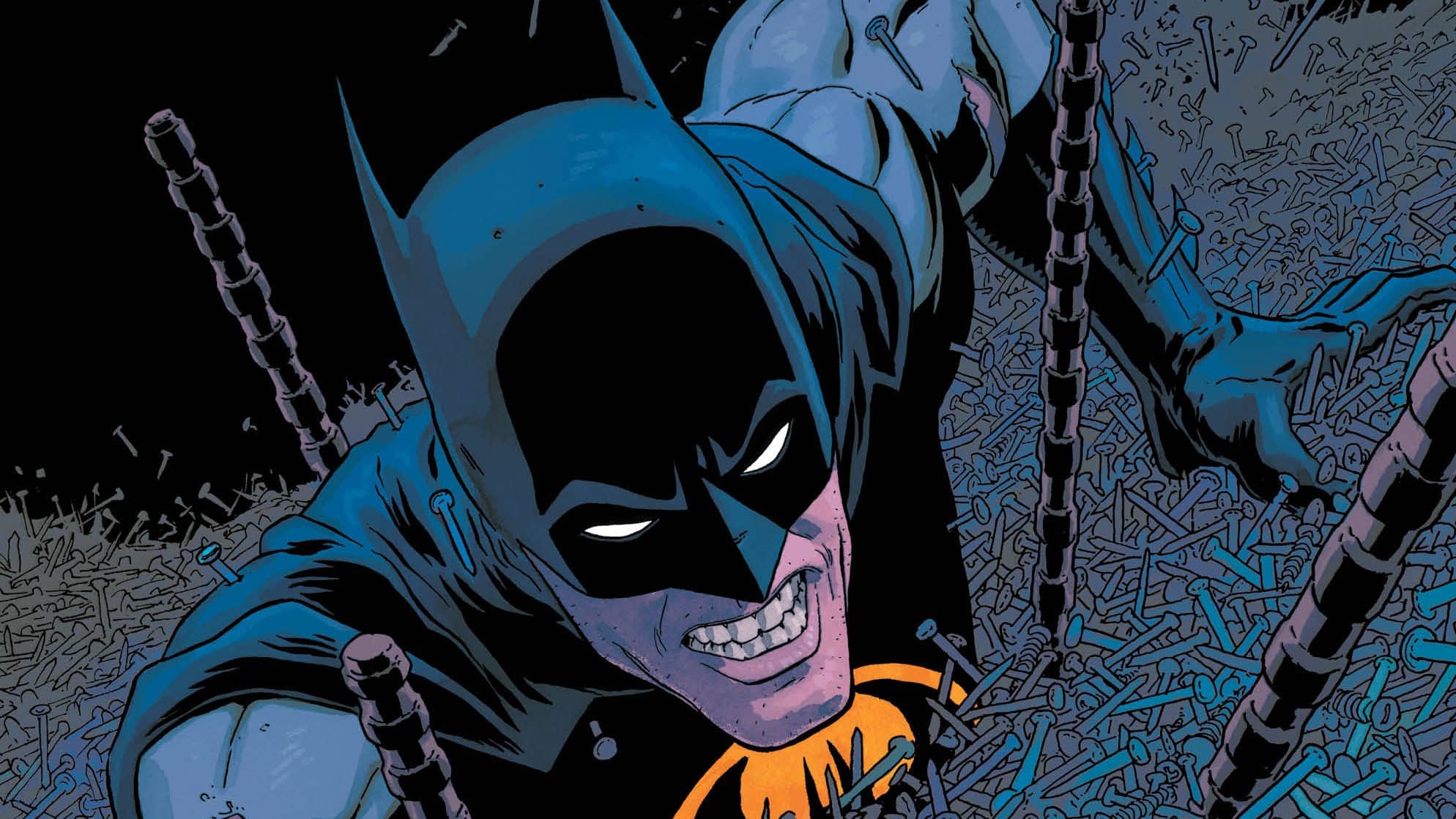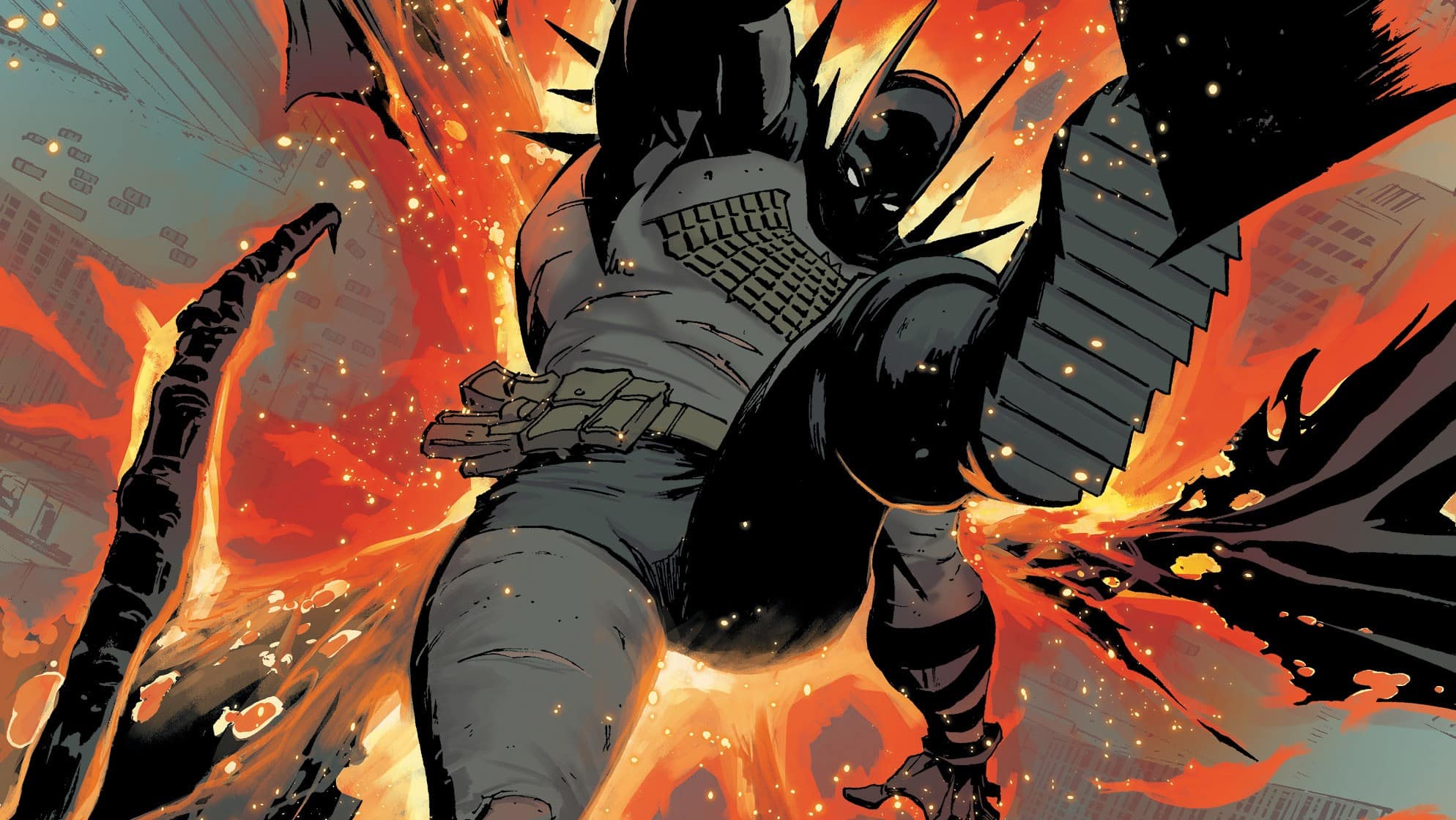Detective Comics #1,031
Welcome to a special holiday week Bat Chat! The Mirror inserts himself into Gotham’s mayoral race as he continues his anti-vigilante crusade, Damian makes a move to prove he’s smarter than Batman, and a Bat rogue makes his return in “Detective Comics” #1,031 from Peter J. Tomasi, Bilquis Evely, Mat Lopes and Rob Leigh.

Matt Lazorwitz: So this is our first time looking at “Detective Comics” in these reviews, and we’re jumping in at the midpoint in the story. This issue has a lot of good ideas in it: a mayoral candidate who is anti-mask crossing paths with an anti-vigilante villain; Damian trying to prove he’s smarter than his father; the Bat family in action together. There’s also the return of Hush, which is … less good, but is at least something that fits in with the story as it’s being told. I enjoyed it, but I’m wondering how well the issue, with all of those plots getting smashed into one floppy, comes across, especially if you haven’t read the previous two issues.
Will Nevin: A couple of weeks ago I told Matt — and I guess this is for the benefit of the Loyal Content Consumers because you know that this is a thing I said — that I was going to get caught up on ’Tec so we could chat it up. And while I gave up on getting through the Tynion run I dislike (for reasons, I swear), I did at least read from #1,027, so I’m not coming in as cold as I could be. Overall, while this is not perfect, it does address some of my core complaints with the current “Batman” story, namely a villain that I can’t be bothered to care about. Although it is sad to see a new bad guy lose a little bit of his shine with a reveal.
ML: It is absolutely in character for Hush to be working with another villain, as his earliest appearances were team-ups: with Riddler in the original story, and then with Prometheus in “Gotham Knights,” so while it fits the character … yeah, it’s definitely not where I was hoping the story would go. I’m curious if Hush is the mastermind and Mirror is just a flunky in a flashy costume, or if we’ll get a decent backstory as to why Mirror is the way he is. And, hey, he might betray Hush and off him, and that would be fun.
WN: I’m stupid and just assumed Mirror *is* Hush.
ML: I was thinking that myself, but I went back and checked after finishing the issue, and if we’re meant to take the panels as happening at the same time, Mirror is fighting Batman as Hush is knock-out darting the Batfam.
WN: Look, I said I was stupid. But that explanation does make sense, even though that fight scene was messy in a mostly good way.
ML: No argument there. A riot scene should be messy. These aren’t clean events that make for pretty splash pages. I don’t know if Tomasi is working full script, or if it’s plot first, but it’s nice to see an artist who is using lots of panels. Widescreen storytelling is all well and good, but sometimes a different style is nice to see.
WN: We’ve mentioned the riot; how ‘bout we talk about what set it up? The big issue in this arc has been Mirror and their quest to rid Gotham of the masked vigilantes. (“Tale as old as time, song as old as rhyme, let’s redo an unmasking story.”) And in this issue, we’ve got a big street fight between Gothamites who have been taken in by Mirror’s argument and those who support the Batfam, with the latter actually wearing some of the ‘Fam’s masks in a neat “I am Spartacus” moment. Batman and Co. rush to break up the fight, and all that stuff you already mentioned happens. *Anyway,* since we haven’t talked about this arc or this series yet, what’s your take on this anti-masking stuff? I haven’t seen an original point or observation to this point, so it reads as a pretty tired story to me.
ML: Yes, I’m not hearing anything new in this. It’s a fairly standard trope, which isn’t always a bad thing if the voices behind it are interesting. I think Christopher Nakano, our mayoral candidate, as misguided as he is, is actually the more interesting voice for this than Mirror is. Gotham politicians are invariably corrupt, incompetent or both. I like that we’re getting a different take on the Gotham politician, even if he’s tropey himself in other respects.
WN: The good Officer Nakano! Another one of my Mirror suspects — but they had a conversation with each other, so unless we’re going Green Goblin with this, he’s out of the running. I like him as well, but I look at him like a wrestler getting a random big push to the title scene — I wish we had gotten more of his backstory. After he loses his partner and his eye (which seems like it has to be going somewhere given how often he talks about it — is he going to become a villain when this is all done?), why not feature him in a couple of stories in which he gets frustrated with the status quo? Have him butt heads with Batman or Harvey or something else that says to him, “Only the mayor can fix this.”
ML: I hope he doesn’t become a villain; that whole thing is so done, and I’d like one character who suffers some loss of limb or feature to not go down that route. And I agree, his quest went from zero to sixty in five seconds, but I feel like that’s more on editorial for wanting to get this plot going than it is on creative. Not an excuse, but I’m willing to give the writer a pass on that one. But, back to the unmasking, yeah, it’s not coming from anywhere we haven’t read, but I like the timing on it. These stories often are artificial, with the crisis that triggers them something created just to trigger the story *coughCivilWarcough*. But after Gotham has been through two disasters back to back caused by Batman (“City of Bane” and “Joker War”), it makes sense that there would be public blowback.
WN: For sure — folks are always looking for someone to blame, and it’s easier to finger Batman as the reason for crime and Gotham’s enduring misery rather than the systemic, hard-to-fix-with-a-punch issues that plague both the city and our real world, so in that way, you’re right — the story does feel natural even without being particularly novel.
ML: The final plotline in this issue deals with Damian having stolen Batman’s Black Casebook, his collection of macabre and unsolved cases, and with him solving them to show up his father, since Damian remains severely traumatized from watching Alfred’s death in the latter part of “City of Bane” and is actually finding a way to deal with his trauma that is even worse than other members of the Batfam. Tomasi has probably at this point written more Damian than any other writer, even Damian’s creator Grant Morrison, thanks to extended runs on “Batman & Robin” and the different permutations of “Super Sons” titles, and he writes a strong Damian, and I think this is very in character, but the coincidence that Damian’s cold case is related to what’s going on in the main plot seems awfully pat.
WN: Contrived as all hell, I agree. And talking about Tomasi’s strengths and weaknesses as a writer brings me to my only real general complaint with ‘Tec as at least compared to “Batman”: Tomasi, to me, reads as wordy with too much exposition and a real penchant for dialogue that does not come off well. Batman’s big speech, for example, seemed stiff and, well, a speech.
ML: Absolutely! That is a moment where Batman should have connected with the crowd and theoretically did, which I have no problem with in theory; Batman is the hero of the book, and a hero in general, so while he can be taciturn, he still can reach people. In practice, it was stilted. It felt like something that he literally had scripted, and was reading from the Bat-index cards in his utility belt.
WN: Fewer words are almost always better in a comic. As artist and writer Dan Brereton told me in an interview about the last story DC published in its “Legends of the Dark Knight” revival (may it rest in peace), “There are a lot of frustrated novelists working in comics.” Tomasi definitely reads as one of those fellas.
Batman White Knight Presents Harley Quinn #2
Off in the non-canonical Murphyverse, Harley Quinn hunts down Neo Joker for a chat, new villains are revealed, and a classic episode of “Batman: The Animated Series” is referenced in “Batman: White Knight Presents Harley Quinn” #2 from Sean Murphy, Katana Collins, Matteo Scalera, Dave Stewart and AndWorld Design.

WN: If there is a Sean Gordon Murphy expert in the comics criticism community, I’d like to think it’s me — if only to justify all the time I’ve wasted reading his stuff. But the thing is, I try to come to each book with an open mind: I want to find something good, because that would be something new to talk about. I want to be surprised in a good way, and I want to enjoy something from the Murphyverse since it’s not going away. Really. Honest. And yet every time, we seem to get the same thing: a droll, lifeless book that tries to explore funky ideas in the most awkward, boring way imaginable.
ML: Lifeless is the perfect descriptor for this book, and it feels especially so when it’s drawing from vastly superior material. I got to the end of this issue, and the final scene sees our new villain, Starlet, menacing and about to kill Simon Trent, the actor who played the Grey Ghost. For those of you unfamiliar, this is drawn from an episode of “Batman: The Animated Series,” “Beware the Grey Ghost,” where a villain takes inspiration from an old TV series about a superhero that Bruce used to watch with his father growing up, and Batman teams up with Trent to find the Mad Bomber of Gotham.
After reading the end of this comic, I immediately rewatched “Beware the Grey Ghost.” I’ve been on a B:TAS series kick since I recently got a copy of the art book reprinting Mondo’s gorgeous one-sheet posters inspired by classic episodes (The poster for this episode is actually redrawn in Trent’s room at the end of the comic here). And that episode is even better than I remember. It has heart, it has drama, it has well-drawn action. Adam West puts in one the best performances of his career as the typecast actor, Trent. The animation as Bruce rewatches the episode and remembers a time before his parents’ death is subtle and heartwarming. It is, basically, everything this comic is not.
WN: It sure is something to watch creators take a beloved property and ass it all up, isn’t it? It makes sense in a way given Harley’s B:TAS origins, but it’s still breathtaking to see the raw gall right there on the page. A very similar moment, I think, is when Harley gives “Neo” (that’s the Murphyverse label for the universe’s doppel Harley) and Poison Ivy a side-eye glare of what read to me as disapproval. We have a generation of comics fans who have embraced that as either a coded or explicitly queer relationship, and you’re going to shit on it? (That moment came, by the way, after they said they were “roommates,” which was patronizingly stupid.) Who the fuck does he think he is?
ML: Chris Claremont and his love of the phrase gal pals comes to mind, back when all queer X relationships had to be coded. Only this isn’t the ’80s, these are characters who have been physically amorous on page in numerous other books, and you, sir, are no Chris Claremont at the height of his powers. And also, Neo? Really? The only response to that is an equally hackneyed joke: “The Matrix called, and it wants its name back.”
WN: “Neo” here is short for “Neo Joker” because it was the doppel Harley who started crimining in the Joker’s place in the first “White Knight” book, and I feel stupider for typing that.
ML: OK, so here’s a question from the Bat expert to the Murphy expert (and I’m sorry for having to call anyone that, let alone someone I number in the list of people I consider a friend). Neo Joker is the Suicide Squad/New 52 version of Harley, while Harley is the more B:TAS one, yes?
WN: Exactly, or at least Murphy’s interpretation of the latter. He created this Harley (his Harley) as an explicit rejection of all of the character development we’ve seen over the years — which, by the way, only makes me angrier about the Harley/Neo/Ivy moment. It’s Murphy expressing his personal disapproval with that queer relationship.
ML: Oh, that is extra yucky, yeah. So, check this out:
Starlet in her flapper regalia is just similar enough to the all black-and-white flapper Harley from the “Emperor Joker!” episode of “Batman: The Brave and the Bold” (pictured above) that it makes me wonder if it is a nod to a third version of the character, or just a coincidence. I think it’s probably the latter, since I can’t imagine anything less SGM than the light-hearted “Brave and the Bold” series.
WN: There’s nothing subtle about anything Murphy does [insert Garth Marenghi subtext meme here], so if Starlet reads to you as yet another Harley, that’s probably what we’re meant to think.
ML: I mean, it just seems like a really big coincidence if it’s not intentional.
WN: I think to say it’s coincidence gives Murphy too much credit. The parts of this story that aren’t frustrating are insipid. If he’s not insulting you, he’s boring you. That’s the Murphyverse to date, and that’s certainly the crux of “Batman: White Knight Presents: Harley Quinn” #2.
Bat-miscellany
- OK, by this point it’s clear they’re different characters, but Gail Simone introduced a villain in her “Batgirl” run also called Mirror, who also had a reflective mask, and it’s taken me this long to be 100% sure they’re different characters.
- Normally references to past creators are cute and clever, but nods to Detectives “Greg Brubaker” and “Ed Rucka” break the fourth wall a little too much when they’re prominently featured in nearly consecutive panels.








